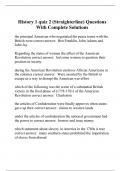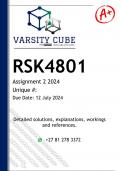Summary
Summary Corporate risk management and option techniques: Frederiek Schoubben
- Course
- Institution
Full summary of corporate risk management: Part Frederiek Schoubben. Contains all slides, papers and notes during classes. Only this summary is needed to pass the exam. Grade: 17/20
[Show more]












